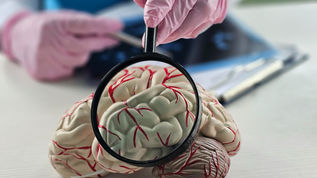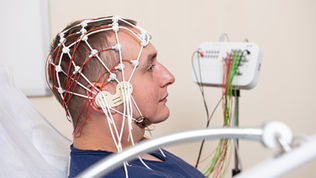top of page

Insight
Insights and Innovations in Functional Neurology
All Posts


Abnormalities of Eye-Hand Coordination in Patients with Writer's Cramp: Possible Role of the Cerebellum
Abstract Background: Writer's cramp (WC) is one of the commonly observed focal dystonias. The pathophysiology of WC has not been fully...


Changes in Measures of Cervical Spine Function, Vestibulo-ocular Reflex, Dynamic Balance, and Divided Attention Following Sport-Related Concussion in Elite Youth Ice Hockey Players
Abstract Background: Concussion is a commonly occurring injury. The extent to which the cervical spine, vestibulo-ocular reflex (VOR),...


Trunk motion visual feedback during walking improves dynamic balance in older adults: Assessor blinded randomized controlled trial
Abstract Background: Virtual reality and augmented feedback have become more prevalent as training methods to improve balance. Few...


Head-Eye Vestibular Motion Therapy Affects the Mental and Physical Health of Severe Chronic Postconcussion Patients
Abstract Context: Approximately 1.8-3.6 million annual traumatic brain injuries occur in the United States. An evidence-based treatment...


The effect of virtual reality on visual vertigo symptoms in patients with peripheral vestibular dysfunction: a pilot study
Abstract Individuals with vestibular dysfunction may experience visual vertigo (VV), in which symptoms are provoked or exacerbated by...


Review of Vestibular and Oculomotor Screening and Concussion Rehabilitation
Abstract Vestibular and oculomotor impairment and symptoms may be associated with worse outcomes after sport-related concussion (SRC),...


Visual-vestibular processing deficits in mild traumatic brain injury
Abstract Background: The search for reliable and valid signs and symptoms of mild traumatic brain injury (mTBI), commonly synonymous with...


Attentional distractibility by optokinetic stimulation in Alzheimer disease
Abstract Objective: Unilateral temporoparietal injury may result in an attentional deficit for stimuli presented in contralesional space....


Multimodal assessment of optokinetic visual stimulation response in migraine with aura
Abstract Objective: This study aimed to assess activation patterns and the hemodynamic response to optokinetic stimulation in migraine...


The Effect of Optokinetic Stimulation on Perceptual and Postural Symptoms in Visual Vestibular Mismatch Patients
Abstract Background: Vestibular patients occasionally report aggravation or triggering of their symptoms by visual stimuli, which is...


Decreased Number of Self-Paced Saccades in Post-Concussion Syndrome Associated with Higher Symptom Burden and Reduced White Matter Integrity
The aim of this study was to examine the potential utility of a self-paced saccadic eye movement as a marker of post-concussion syndrome...


Saccadic impairment in chronic traumatic brain injury: examining the influence of cognitive load and injury severity
Objective: Previous research suggests that saccadic eye movements can be uniquely sensitive to impairment in chronic traumatic brain...


Deficits in saccades and smooth-pursuit eye movements in adults with traumatic brain injury: a systematic review and meta-analysis
Purpose: To conduct a review of literature and quantify the effect that traumatic brain injury (TBI) has on oculomotor functions (OM)....


Inaccurate Saccades and Enhanced Vestibulo-Ocular Reflex Suppression during Combined Eye-Head Movements in Patients with Chronic Neck Pain: Possible Implications for Cervical Vertigo
Background: The primate ocular motor system is designed to acquire peripheral targets of interest by coordinating visual, vestibular, and...


Quantitative oculomotor findings in migrainous patients
Background: Neurotologic signs and symptoms, especially vestibular symptoms are common in migrainous patients. Involvement of the visual...


Saccades and smooth pursuit eye movements in central vertigo
In order to analyze the diagnostic efficiency of saccadic and pursuit eye movements compared to findings from brain magnetic resonance...


Deficits in predictive smooth pursuit after mild traumatic brain injury
Given that even mild traumatic brain injury (TBI) may produce extensive diffuse axonal injury (DAI), we hypothesized that mild TBI...


Quantitative oculomotor findings in migrainous patients
Background: Neurotologic signs and symptoms, especially vestibular symptoms are common in migrainous patients. Involvement of the visual...


Binocular coordination of saccades during reading in children with clinically assessed poor vergence capabilities
Prior studies have pointed toward a link between the saccadic and vergence systems, coordinating binocular saccadic movements. Recent...


Concurrent vision dysfunctions in convergence insufficiency with traumatic brain injury
Purpose: This study assessed the prevalence of convergence insufficiency (CI) with and without simultaneous vision dysfunctions within...
bottom of page

